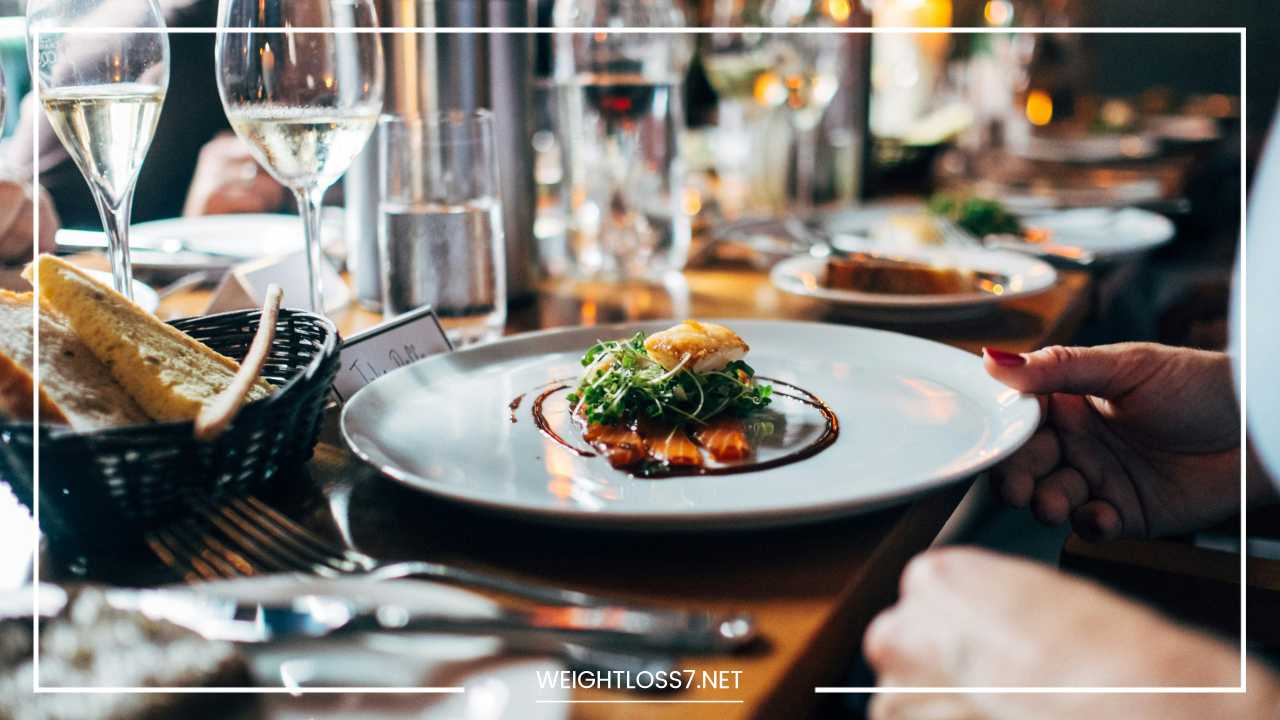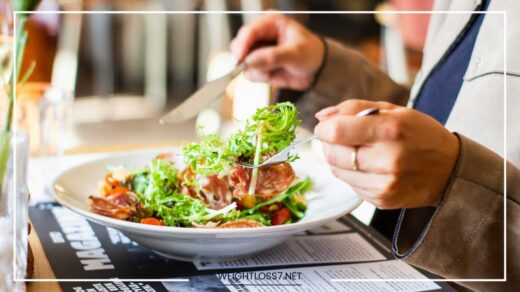What to Eat to Lose Weight

Weight Loss
What to Eat to Lose Weight: A Sustainable Guide
Dieting can feel like a constant battle. Fads come and go, leaving you confused about what actually works. But the truth is, there’s no magic bullet for weight loss. It’s about finding a sustainable approach that nourishes your body and keeps you feeling satisfied.
This comprehensive guide explores the foundational principles of healthy eating for weight loss. We’ll delve into the types of food that can support your goals, debunk common myths, and provide tips for building a balanced diet you can enjoy for the long term.
Understanding Weight Loss: Calories and Metabolism
At its core, weight loss boils down to creating a calorie deficit. This means burning more calories than you consume. Your body uses calories for energy, and when it has extra, it stores them as fat. To lose weight, you need to tip the scales in favor of burning.
However, it’s not just about raw numbers. Metabolism, the rate at which your body burns calories, also plays a crucial role.
Factors like muscle mass, age, and genetics influence your metabolic rate. The more muscle you have, the higher your metabolism. So, building muscle can help you burn more calories even at rest.
Macronutrients: The Building Blocks of Your Diet
Macronutrients (carbs, protein, and fat) are the main types of nutrients your body needs in large amounts. Each plays a specific role in weight loss and overall health:
- Carbohydrates: Carbs provide readily available energy. Complex carbs found in whole grains, fruits, and vegetables are a better choice than refined carbs like white bread and pastries. Complex carbs deliver sustained energy and keep you feeling fuller for longer.
- Protein: Protein is essential for building and repairing tissues, including muscle. It also helps you feel satisfied and can boost metabolism. Lean protein sources like chicken, fish, beans, and lentils are your allies in weight loss.
- Fat: Healthy fats are crucial for hormone regulation, cell function, and satiety. Avocados, nuts, seeds, and fatty fish are excellent sources of healthy fats. While fat is high in calories, your body needs it for proper function. Focus on including healthy fats in moderation.
The Power of Fiber for Weight Loss
Fiber is a type of carbohydrate that your body can’t fully digest. It promotes feelings of fullness, keeps you regular, and aids in digestion. Including fiber-rich foods like fruits, vegetables, whole grains, and legumes in your diet can significantly benefit your weight loss journey. Here’s how:
- Slows Digestion: Fiber slows down the absorption of sugar into the bloodstream, preventing blood sugar spikes and crashes that can lead to cravings.
- Increases Satiety: Fiber keeps you feeling fuller for longer, reducing your overall calorie intake.
- Gut Health: Fiber promotes a healthy gut microbiome, which can positively impact metabolism and weight management. Studies have shown that a diverse gut microbiome is associated with a lower risk of obesity.
Taking Fiber a Step Further: Prebiotics and Probiotics
Prebiotics and probiotics are two types of dietary fiber that can further enhance your weight loss efforts.
- Prebiotics: These are non-digestible fibers that act as food for the beneficial bacteria in your gut. They help promote the growth of these good bacteria, leading to a healthier gut microbiome.
- Probiotics: These are live bacteria that provide additional health benefits. Including probiotic-rich foods like yogurt, kimchi, and sauerkraut in your diet can improve gut health and potentially aid weight management.
Building a Weight-Loss Friendly Plate
Now that we understand the fundamentals, let’s translate them into actionable steps. Here’s how to build a weight-loss friendly plate:
- Half Plate Non-Starchy Vegetables: Fill half your plate with a variety of colorful non-starchy vegetables like broccoli, spinach, peppers, and mushrooms. They’re low in calories, high in fiber and vitamins, and add volume to your meals, making you feel satisfied with fewer calories.
- Quarter Plate Lean Protein: Include a source of lean protein like grilled chicken, fish, lentils, or tofu. Protein helps build muscle, keeps you feeling satisfied, and boosts metabolism. Aim for 20-30 grams of protein per meal.
- Quarter Plate Complex Carbs: Choose complex carbs like brown rice, quinoa, sweet potato, or whole-wheat bread. These provide sustained energy and essential nutrients. Opt for whole grains whenever possible as they are higher in fiber and nutrients compared to refined grains.
- Healthy Fats: Don’t be afraid of healthy fats! Include a moderate amount of healthy fats like avocado, nuts, seeds, or olive oil in your diet. They promote satiety, improve nutrient absorption, and add flavor to your meals. Aim for around 1 tablespoon of healthy fats per serving of food. This could be a drizzle of olive oil on your vegetables, a handful of almonds in your yogurt, or half an avocado with your lunch. Remember, healthy fats are calorie-dense, so be mindful of portion sizes.
Portion Control: Your Weight Loss Ally
Portion control is key to managing calorie intake. Here are some tips to manage portion sizes effectively:
- Use Smaller Plates: Studies show that people tend to eat more when presented with larger plates. Opt for smaller plates (around 9 inches) to trick your brain into feeling satisfied with less food.
- Measure and Weigh: Measure out your portions, especially for grains and carbohydrates, to ensure you’re not overeating. Invest in measuring cups and spoons or a food scale for better accuracy.
- Mindful Eating: Eat slowly, savor your food, and pay attention to your body’s hunger and fullness cues. Put down your fork between bites, chew thoroughly, and stop eating when you’re comfortably full, not stuffed. It takes about 20 minutes for your brain to register satiety signals from your stomach.
Beyond the Plate: Habits for Sustainable Weight Loss
A healthy diet is a cornerstone of weight loss, but it’s not the only factor. Here are some additional habits that can support your weight loss journey and promote long-term success:
- Stay Hydrated: Drinking plenty of water throughout the day keeps you feeling full, reduces calorie intake from sugary drinks, and aids in digestion. Aim for eight glasses of water per day, adjusting based on your activity level and climate.
- Sleep Adequately: When you’re sleep-deprived, your body produces more ghrelin (the hunger hormone) and less leptin (the satiety hormone), leading to increased cravings and overeating. Aim for 7-8 hours of quality sleep each night.
- Manage Stress: Chronic stress can elevate cortisol levels, a hormone linked to weight gain. Find healthy ways to manage stress, such as exercise, meditation, or yoga.
- Strength Training: Building muscle mass boosts your metabolism and helps you burn more calories even at rest. Include strength training exercises 2-3 times a week for optimal results.
- Plan and Prepare Meals: Planning and prepping meals in advance helps you make healthy choices and avoid unhealthy temptations when you’re short on time. Cook more meals at home and pack healthy lunches to avoid unhealthy options on the go.
Sample Meal Plans for Weight Loss
Here are some sample daily meal plans to give you an idea of how to incorporate these principles into your diet:
Sample Meal Plan 1:
- Breakfast: Greek yogurt with berries and a sprinkle of chia seeds
- Lunch: Grilled chicken salad with mixed greens, quinoa, avocado, and a light vinaigrette dressing
- Dinner: Salmon with roasted vegetables and brown rice
- Snacks: Apple slices with almond butter, carrot sticks with hummus
Sample Meal Plan 2:
- Breakfast: Scrambled eggs with spinach and whole-wheat toast
- Lunch: Lentil soup with a whole-wheat roll and side salad
- Dinner: Turkey chili with a side of brown rice
- Snacks: Handful of mixed nuts, sliced bell peppers with guacamole
Remember: These are just samples. You can adjust them to your preferences and dietary needs.
Spicing Up Your Weight Loss Journey: Flavorful and Healthy Recipes
Eating healthy doesn’t have to be bland. Here are some tips to add flavor to your weight-loss meals:
- Herbs and Spices: Experiment with a variety of herbs and spices like rosemary, thyme, cumin, and chili powder to add flavor without extra calories.
- Citrus: A squeeze of lemon or lime juice can brighten up your dishes and add a refreshing touch.
- Fresh Garlic and Ginger: These aromatic ingredients add depth of flavor to your meals.
- Vinegar: A splash of vinegar can add a tangy flavor and enhance the taste of your food.
Explore Online Resources: There are countless healthy and delicious recipes available online. Look for websites or apps that cater to weight loss or healthy eating to find inspiration.
Debunking Weight Loss Myths
There’s a lot of misinformation floating around weight loss. Let’s clear up some common myths:
- Myth: Carbs Make You Fat: Not all carbs are created equal. Complex carbs are essential for a healthy diet and can aid weight loss. Focus on limiting refined carbs like white bread, pastries, and sugary drinks.
- Myth: Skipping Meals Helps You Lose Weight: Skipping meals can actually backfire. It can lead to overeating later and slow down your metabolism.
- Myth: Certain Foods Burn Fat: There are no magic “fat-burning” foods. Weight loss is about creating a calorie deficit through a combination of healthy eating and exercise.
- Myth: Detox Diets Are Effective: These restrictive diets are often unhealthy and unsustainable. Focus on long-term dietary changes for lasting results.
- Myth: One-Size-Fits-All Approach: The best weight loss plan is the one that works for you and your lifestyle. Consider consulting a registered dietitian or nutritionist for personalized guidance.
Building a Sustainable Relationship with Food
Developing a healthy relationship with food is crucial for long-term success. Here are some tips:
- Focus on Nourishment: Think of food as fuel for your body. Choose foods that nourish you and make you feel your best.
- Practice Intuitive Eating: Learn to listen to your body’s hunger and fullness cues. Eat when you’re hungry and stop when you’re satisfied.
- Don’t Deprive Yourself: Restrictive diets often lead to cravings and binge eating. Allow yourself occasional treats in moderation.
- Enjoy the Process: Eating should be a pleasurable experience. Savor your food, eat mindfully, and appreciate the taste and textures.
- Celebrate Non-Scale Victories: Weight loss isn’t just about the number on the scale. Celebrate improvements in your energy levels, mood, and overall well-being.
Final Word: Weight Loss is a Journey, Not a Destination
Remember, weight loss is a journey, not a destination. There will be ups and downs along the way. Be patient, celebrate your progress, and don’t give up on your goals.
By adopting a sustainable approach that combines healthy eating habits with other lifestyle changes, you can achieve lasting weight loss and improve your overall health and well-being.

















